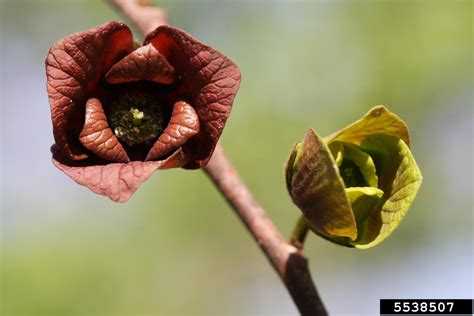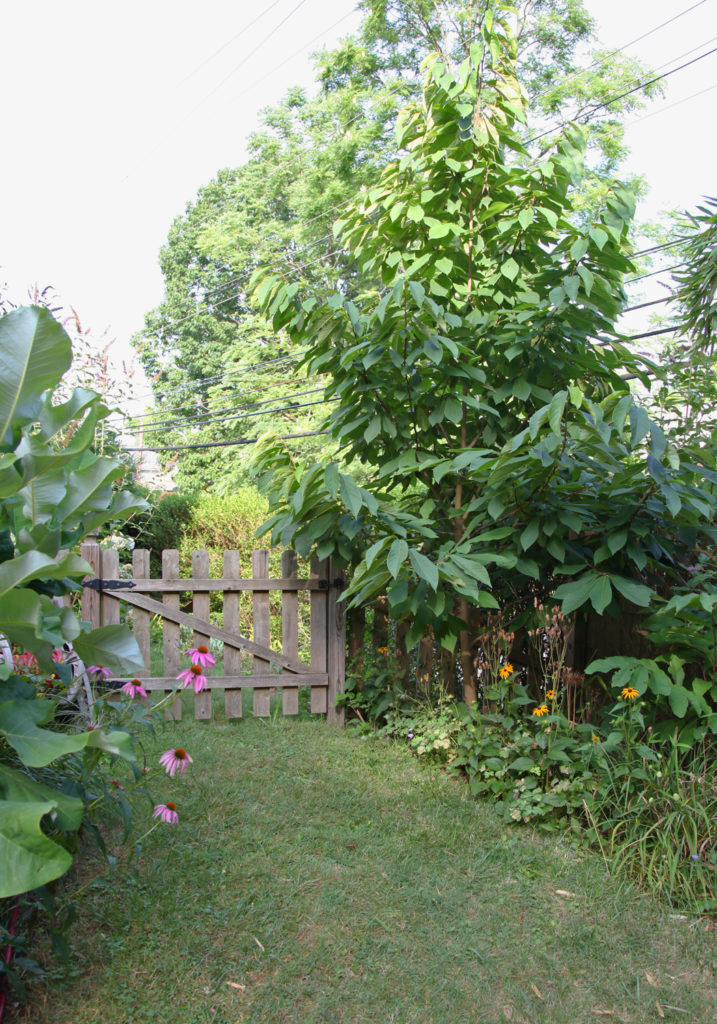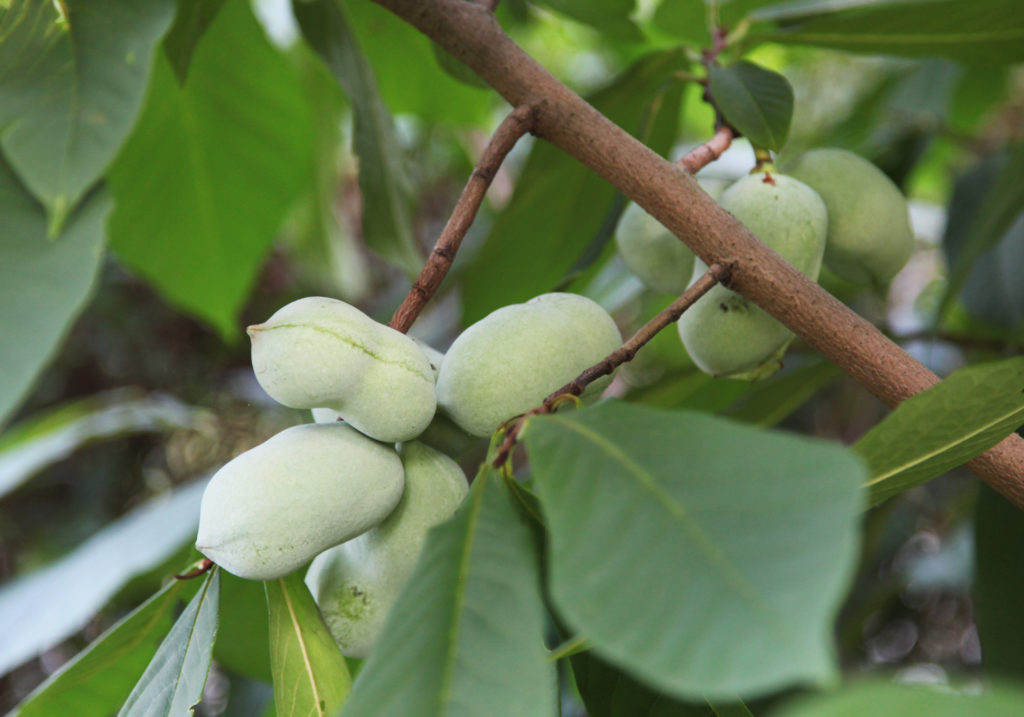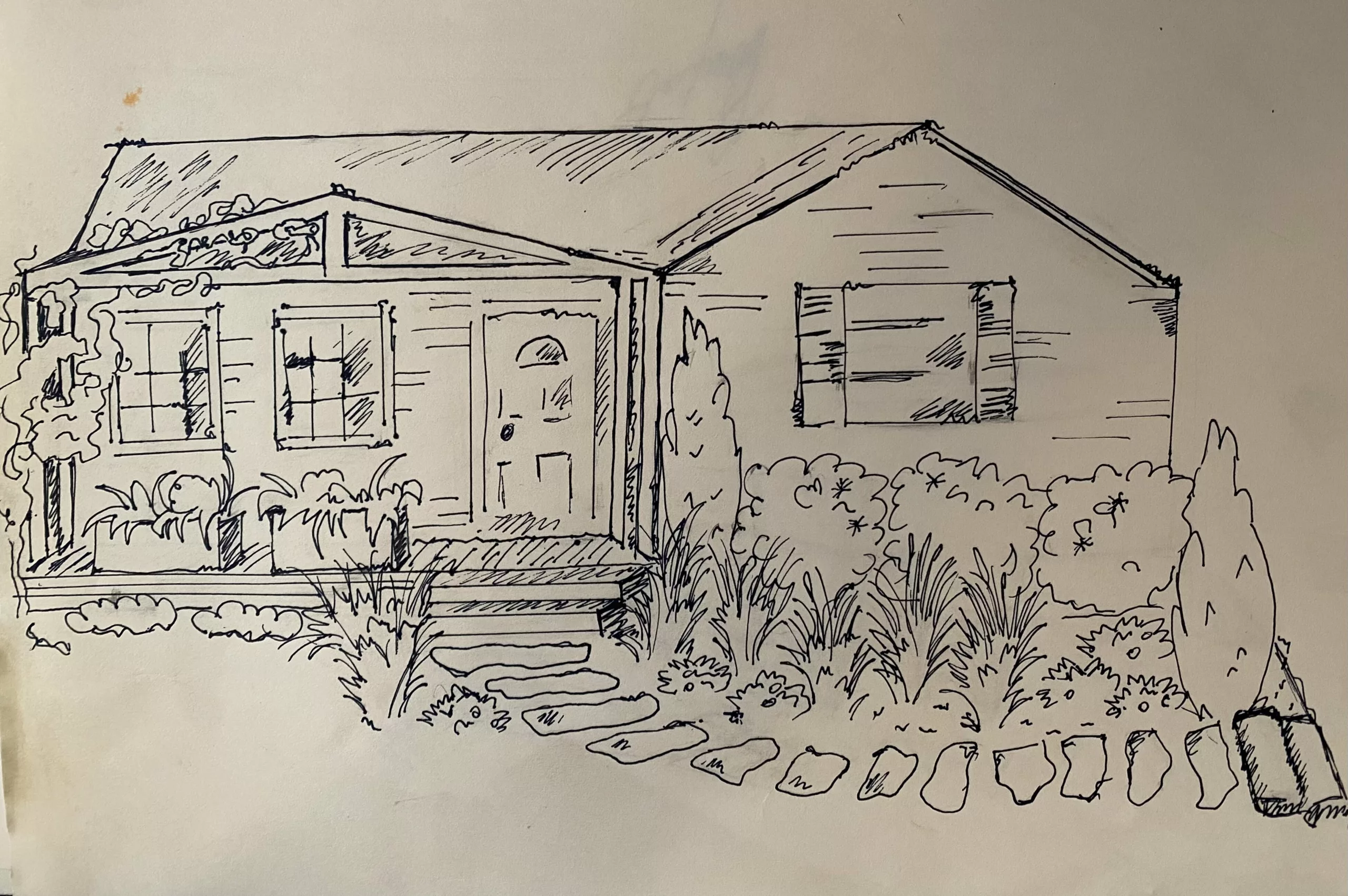When it comes to fruit trees, there’s nothing quite like the North American Pawpaw (Asimina triloba). Pawpaws are tropical looking, short growing, beautiful trees. They create fruit that has an almost custard-like texture, and whose flavor is described as banana to mango-like with hints of vanilla or citrus.
Let’s dig in and learn more about this spectacular native!
Where do pawpaw trees grow?
Pawpaws are native to Eastern North America. They grow as far north as southern Michigan, and as far south as north Florida. But, in a carefully curated garden, they can survive anywhere in USDA zones 5-8!
Regions where pawpaws grow indigenously, the trees had significant cultural ties with the people who also lived alongside them. In fact, pawpaws were such an important food source, the Shawnee referred to the full moon in September as “Papaw Moon.”
How do I identify a pawpaw?
The North American pawpaw is a quick-spreading understory tree. They tend to inhabit river flood plains, with rich, well-draining soil. In these conditions, the trees spread their roots wide and send up shoots to create more saplings. You can find them growing in clumps with up to 15 trees! So if you think you see one pawpaw, you’re likely to see two… or ten.
Pawpaw trees multiply (and fruit sparingly) this way until a larger tree in the forest falls, creating a hole in the forest canopy. Then it’s time to spend their energy growing up. The pawpaws will begin growing tall into larger, fruiting, canopy trees.
In the early spring, the trees produce reddish-purple to maroon flowers that don’t smell the greatest. These odorous flowers are forgivable though. It’s the trees’ way of attracting pollinators, and deterring deer and other herbivores that might snack on the trees’ tender new growth.
The fruit matures any time between late August to October. The fruits are oval-shaped, with big, thick black seeds inside. When the fruits are ripe they will often fall away from the tree, bruising easily and releasing a sweet scent.
In the fall, when it’s time to drop their leaves, they put on a spectacular color show, erupting in vibrant neon-yellow color.
North American Pawpaw tree requirements
When establishing pawpaws it’s best to try and mimic how they grow in natural areas. Since young pawpaws are understory trees, they have shade and protection from older, more mature trees. In our gardens, newly established pawpaw saplings need protection from too much sun, wind, or rain.
Yet as they age, pawpaws require more sun to set fruit. The trick to establishing healthy pawpaws is making sure they get the right balance of sun and protection. Try planting young pawpaws near a north-facing fence that will shade the young tree. Or putting a south-facing trellis near the saplings.
Another minor challenge is that pawpaws are self-incompatible. To set fruit, the trees must be pollinated from a pawpaw tree they aren’t related with. When establishing pawpaws, make sure to get two trees from different mother plants. This will ensure fruitful pollination whenever your trees are ready.
The North American Pawpaw is one of our wonderful native plants. From the fun fruits to the fall color it creates, to the deer it deters, and the pollinators it provides for, this tree is sure to be a fun addition to any garden. Though it may take a little strategy and planning to get started, we promise this local fruit tree is worth the work. So get out there and get planting!
For tips on planting perennials such as the Pawpaw tree, check out this post!












